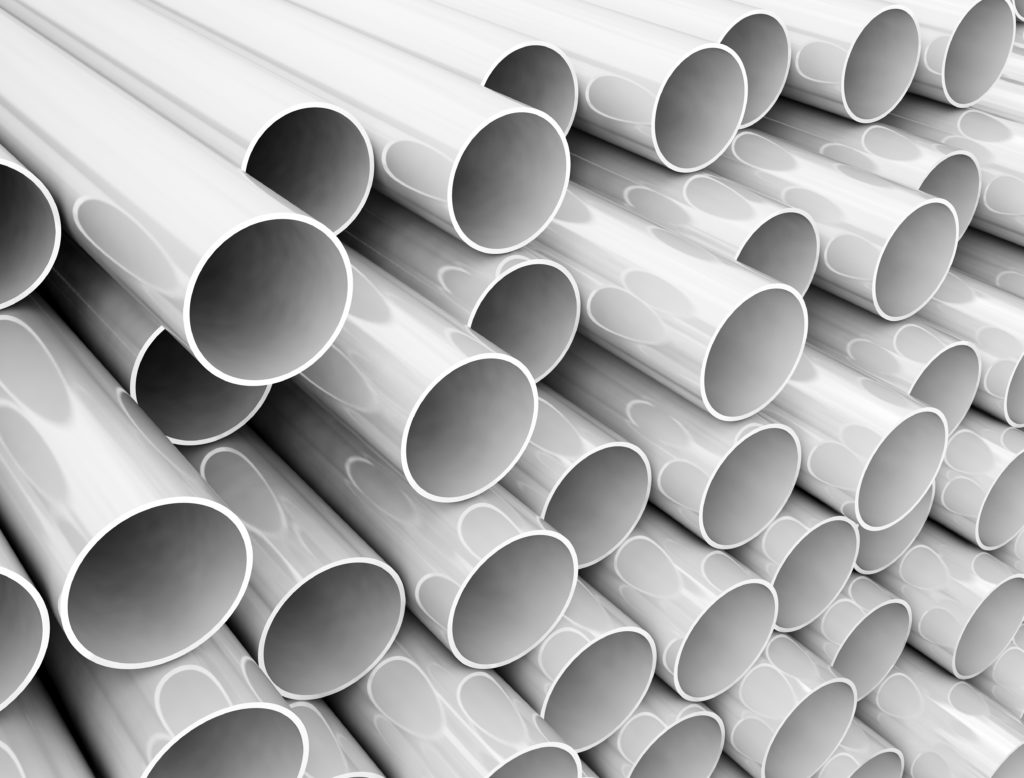PVC Pipe For Your Irrigation System
This article talks about PVC pipe and which type to choose. If you need help figuring out which pipe to use for your irrigation then we can help.
PVC stands for polyvinyl chloride. PVC is easier to say. This pipe accounts for about two thirds of the water distribution market, including drinking, irrigation and waste. So far the material has been found to be inert, meaning it doesn’t absorb or release harmful chemicals. Unless you burn it. Don’t sniff burning PVC. It’s no fun, painful and the smoke can be hazardous.
The most common question we get is a two-parter: what size pipe should I use and what kind: Schedule 40 or Class 200? Knowing the differences can help you create an efficient system. Click here to shop for PVC pipe by the foot.

Remember the old a picture is worth a thousand words quote? I’ll give you a picture now and you can decide if you want to skip the other 476 words.
Schedule 40 Pipe
Let’s talk about Schedule 40 pipe first. It is the simplest. Schedule XX designates the wall thickness at a certain size. For example, a 1 pipe in schedule 40 has a wall thickness of .133; schedule 80 has a wall thickness of .179. Higher schedule = thicker wall.
You will care about this later. It does get more interesting, hopefully.
Class 200 Pipe
Class pipe is different and the original definitions go back to steam boilers. We’ll skip ahead. Class 200 pipe, the most common class pipe used in irrigation, is rated for 200 pounds per square inch pressure (psi) and has a wall thickness of .063 for a 1 pipe. Notice that is a lot thinner than schedule 40. This is about to become very important. Schedule 40, in comparison, is rated for 450 psi. This is not as important.
The average irrigation system is designed for about 30 to 50 psi. Plenty of safety factor built in. It is not, however, as much as you think. A poorly designed system can experience water hammer and a 60psi line can experience frequent surges of pressure up to about 170 psi. Still within safety range.
Now we can get into the why do we care part. Everything in irrigation ties into gallons per minute. Your spray head puts out a certain number of gallons per minute (gpm). Your design revolves around it. If you have 13 gpm you can put six 2 gpm heads on that zone. Or four 2gpm and four 1 gpm. (Never design to the absolute max gpm.)
Look at the cross section of ¾” and 1″ pipe both in schedule 40 and class 200. Check the comparative flows in the picture above. This difference in flow can make a big difference in how you design your zones. There are friction loss/flow charts available to help you.
So What Do You Choose?
The rule of thumb is to use schedule 40 for the main line. Run it from the water meter, through the backflow and to the valves. Then use class 200 for the laterals, or after the valves.
Why schedule 40 when it allows fewer gallons per minute? Because the thick wall makes it tougher, harder to break. Your main is under constant pressure; the laterals are under pressure only when they are active and it is an open-end system. Before real pressure can build in your laterals the water is shooting out the sprays, keeping pressure down. Schedule 40 is more resistant to shovels (its sworn enemy), tent stakes, car tires, kids, dogs and other puncture/crack pressures.
There are exceptions to everything. There are situations where an entire system should be done in class 200 pipes. Same for schedule 40. Now that you know the difference you can make a more informed decision and start dreaming about better things, like a 1973 Norton Commando.


























